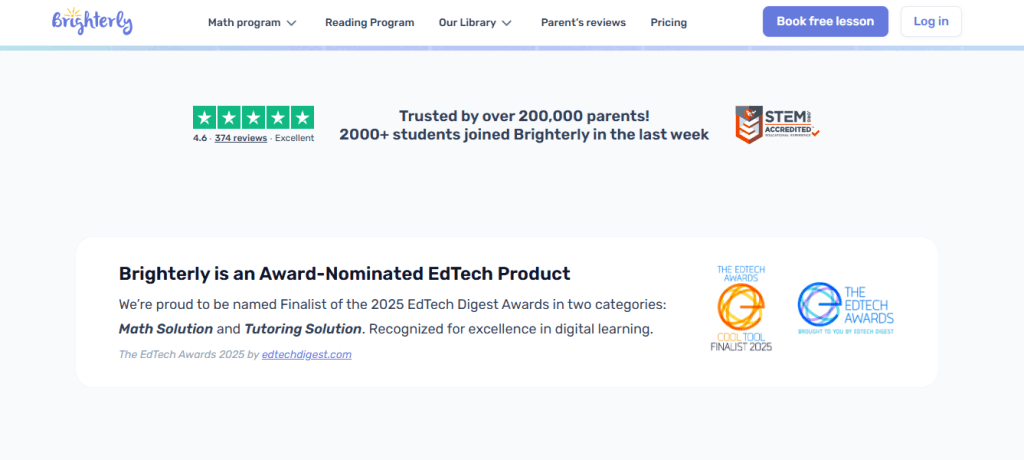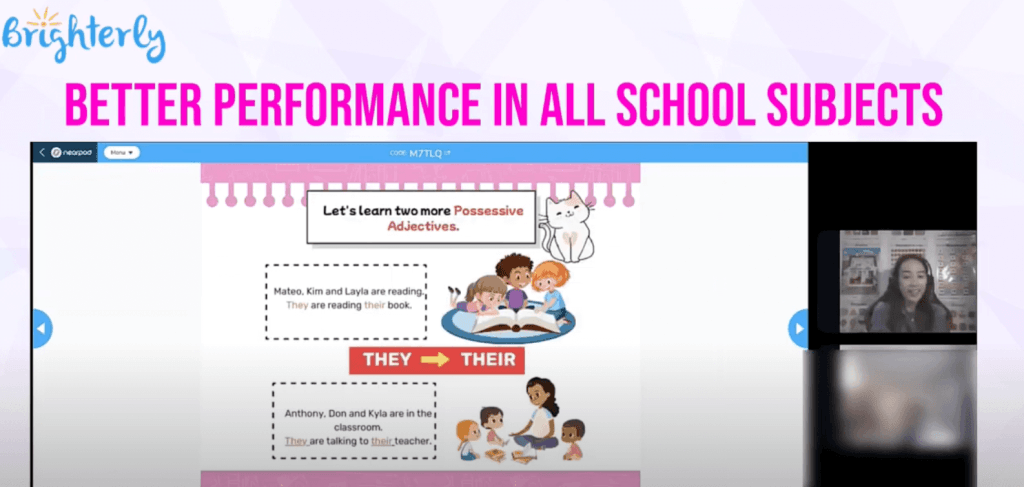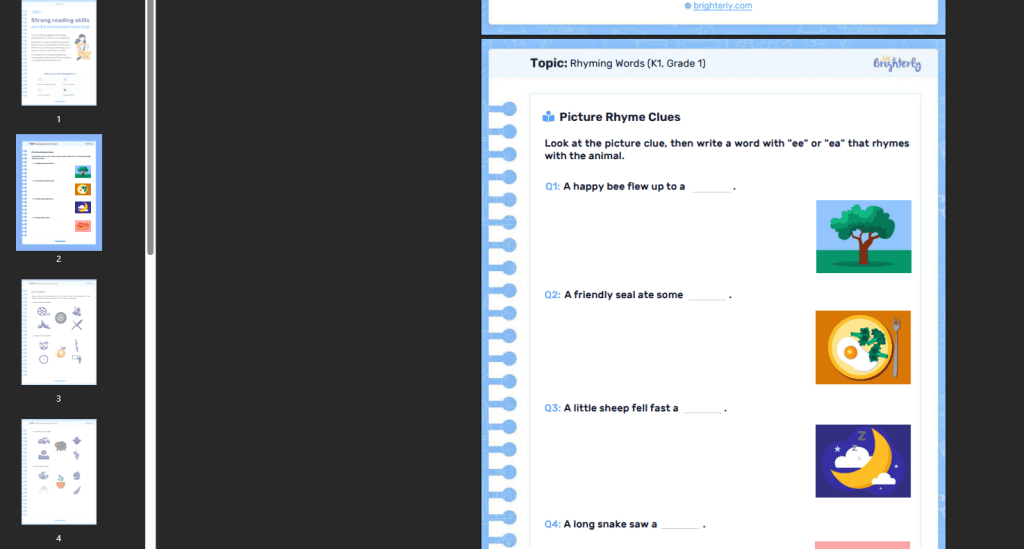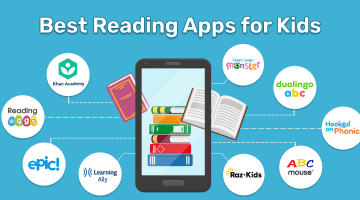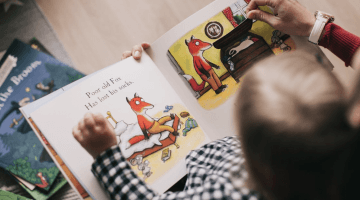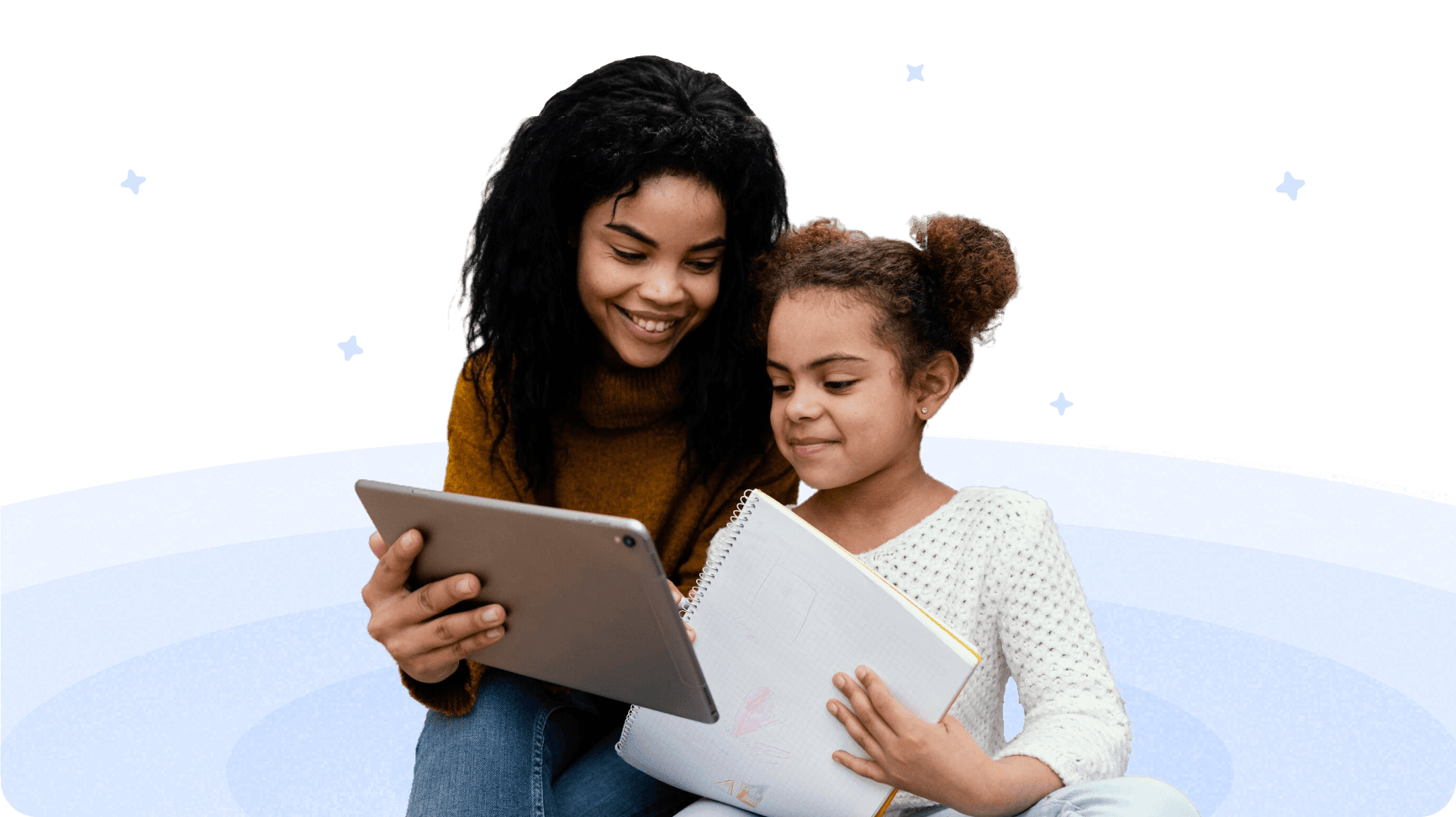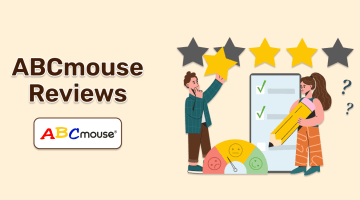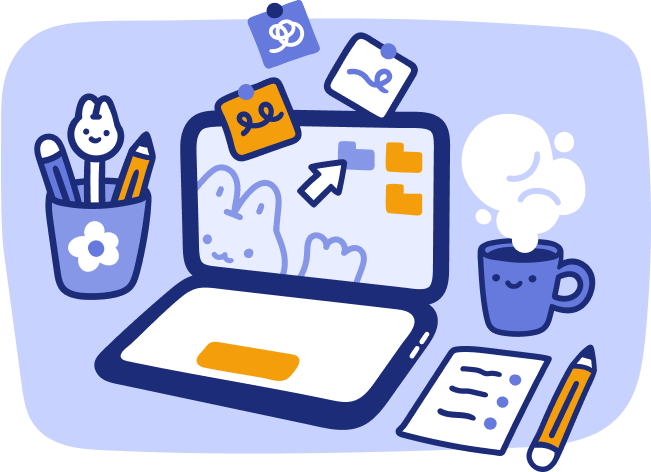Dyslexia and Reading: Parents’ Guide to Effective Learning
reviewed by Marvi M. Andres
Updated on September 16, 2025
Dyslexia happens in about 1 to 5 kids, yet it often goes unnoticed. The good news is that dyslexia and reading can function together, but only once you learn to approach the condition correctly. As someone who has been tutoring for years, I’ve composed this guide to give you a good glimpse into the topic.
Key points
- Dyslexia is a condition that affects kids’ ability to understand, memorize, and interpret words, directly impacting their success in reading comprehension.
- The best way to help struggling learners is to commit to reading and writing tutoring for dyslexia, which entails lessons in a trust-building 1:1 setting. Brighterly is these days one common choice among parents.
- Using decodable books, staying positive, and re-reading stories are only a few of the strategies that can improve reading skills for kids with dyslexia.
- Learners are advised to practice with worksheets, visualize written text, and avoid distractions to achieve better overall results.
How does dyslexia affect reading?
Dyslexia affects reading by interfering with the brain’s processing ability to match letters with corresponding sounds. Thus, children with this condition experience difficulties recognizing words, are generally slower readers, and commonly exhibit poor comprehension results.
What does dyslexia look like when reading?
Reading with dyslexia is often revealed through slow and hesitant pronunciation, challenges in understanding words, mixing of sounds and letters, and skipping or adding text parts.
The most common dyslexia reading symptoms
- Children with dyslexia tend to interchange letters in words, for example, they’ll likely read “felt” instead of “left.”
- They sometimes see words shuffled or reversed due to weak visual or auditory association. That’s why they can read a completely different sentence.
- Teaching reading to dyslexic students can become a significant challenge in the early stages, when they develop phonemic recognition. That’s because troubles with phonological awareness are common among affected learners.
- Not just reading — dyslexia also impacts how students spell words and express their thoughts on paper.
- Finally, such children face difficulties concentrating on a single reading passage or even their learning as a whole, which makes parents search for reading techniques for dyslexia.
How does dyslexia affect reading comprehension?
Dyslexia affects reading comprehension in a way that influences accurate word and sound recognition and decoding. Sometimes, it can even impact how a child perceives the whole text. That’s why learning to read with dyslexia requires extra motivation, energy, and mental input.
Dyslexia in numbers
- According to the research, about 5-10% of the US population is diagnosed with dyslexia.
- Data shows that reading dyslexia and other related conditions are more common in primary school boys (9.2%), compared to girls (4.7%).
- Dyslexia can occur with other mental conditions, the most common being ADHD, dyscalculia, DLD, and anxiety.
Can you have dyslexia and be good at reading?
Yes, for sure, a person with dyslexia can still become a fluent and quick reader. However, you should understand beforehand that teaching dyslexic students to read requires considerable effort and practice, aimed at adopting specialized strategies.
As demonstrated by my experience and the reviews on Reddit, the ultimate success of a dyslexic reader largely depends on their inherent motivation and the level of support they receive from the outside.
At this point, I’d like to share a few Reddit reviews to show you that reading and dyslexia can be compatible — with the correct approach, of course.

And one more proof, verifying that everything is possible, when one isn’t afraid to experiment with methods and approaches.
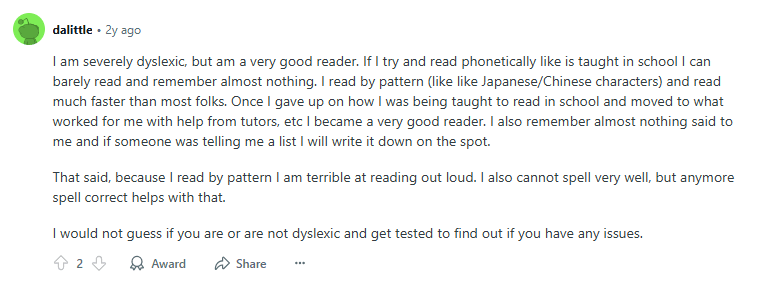
As you can see, working with a tutor has shown proven results when combating dyslexia, sooo…
5 dyslexia strategies for reading
- Working with a reading tutor
- Using decodable books
- Reading stories multiple times
- Encouraging positive motivation
- Giving a break when needed
Dyslexia reading help from a reading tutor
Working with a tutor involves participating in highly personalized one-on-one sessions that follow a systematic progression and are designed to build the basics for successful reading habits and support a child’s broader education goals. Such lessons are typically structured to cover areas like phonics, content decoding, and reading comprehension. Moreover, such tutoring sessions explicitly adapt to the individual preferences of each child and allow for meeting personal needs precisely.

Reading and writing tutoring for dyslexia with Brighterly
Brighterly is a reading and math tutoring platform that explicitly provides what I’ve described above — personalized tutoring in a 1:1 setting according to accustomed curricula. Furthermore, it analyzes each child’s learning style, past experiences, and expectations, precisely targeting what they need.
Brighterly reading curriculum for dyslexia: Reasons to choose
Specifically-trained tutors
Teaching reading to an ordinary student and helping dyslexic readers are different things, and tutors at Brighterly can handle both. Upon registering here, you’ll be asked to take a diagnostic test, which will enable customized instruction. Then, based on its results, you’ll be matched with the best-fitting tutor. Finally, the professional will create a personalized reading program that reflects your requirements.
Common Core-aligned and interactive curriculum
Brighterly strives to minimize any adverse academic effects that may result from reading intervention for dyslexia. The curriculum of your child here will follow the Common Core requirements and adhere strictly to the schedules adopted at schools. No surprises — you learn just the same academic stuff.
One more thing I’d like to point out is that lessons at Brighterly are all based on gamification and interactivity. That’s designed to extend the attention span of children and make learning a more desirable process overall.
Ongoing testing
Last but not least, Brighterly is all about attention and tracking. Here:
- A tutor will continuously evaluate a child’s performance in the material.
- You’ll get regular progress reports to stay on track with their learning.
- You have the opportunity to use free reading tests even without registration to see how well your kid is currently doing.
If in doubt, you can also find some other ideas regarding learning services in the guide titled Reading Programs for Struggling Readers. It contains seven choices, so you can surely find the one that fits you.
Dyslexia and reading decodable books
Decodable books include texts written with a specific pattern. For example, they can consist of excessive usage of sight words or prevail with words that contain a single syllable.
The main power of this strategy for helping dyslexic students read is that it provides additional practice. The logic is simple: more repetition — better memory retention and higher chances for success in the long run.
Helping dyslexic students read decodable books
- First, choose a book that will reflect the current phonics skills of your child. If not sure, select the one that matches their schedule.
- Then, conduct a discussion about the book to build interest.
- Finally, prompt the child to use letter-sound knowledge to decode unfamiliar words.
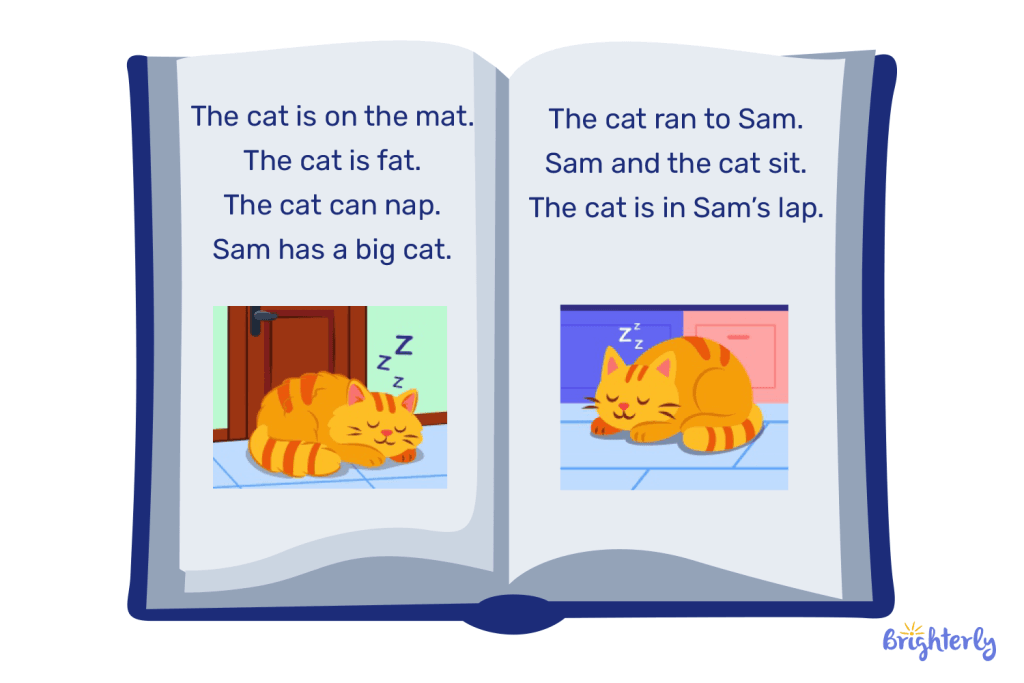
Whenever you’re stuck teaching a dyslexic child to read with a decodable book, try reading aloud to them. The strategy is simple, yet it allows kids to become more confident and fluent overall, laying a strong foundation for lifelong literacy.
Dyslexia reading improvement through story repetition
Re-reading a specific text or story can be more fun than most think. At first, you should pick the writing piece your child truly loves and would like to explore once more. Then, enjoy the benefits, including improved fluency, speed, and analysis.
How to start with re-reading a book?
- The book you pick should be both enjoyable and suitable for the child’s current level. Dyslexia reading shouldn’t be stressful or discouraging, so choose wisely.
- Shift from traditional reading. For example, you can read together with your child, ask them to read aloud, or encourage independent reading.
- And don’t get rash! Give them a distinct time frame, such as a week. Just be sure, it’s predefined beforehand.
As shown by Reddit reviews, repetition and ongoing practice can do wonders for people with dyslexia.

But how to teach dyslexic students to read if they refuse to re-read? Try to make it a whole new experience for them. You can switch roles, try on different voices, or organize a speed challenge to let the entire activity feel more naturally enjoyable.
Teach dyslexic child to read by encouraging positive motivation
Any learner will inevitably make mistakes — and that applies not only to those with dyslexia. Your task is to set up a positive mood for the entire learning process and help the child associate their reading practice with a positive connotation.
How to keep positive motivation when helping dyslexic readers?
- Whenever you teach dyslexic child to read, always focus on their current achievement, not just one big aim. “You did a great job reading that word!” “I saw you tried articulating that sound right” — these are just a few examples.
- You can also try passing the initiative to your child. Ask them which book they’d like to read or which specific topic they want to practice. Let them feel more in charge of what they do.
- Always stay calm! Even the best reading strategies for students with dyslexia won’t work if a child doesn’t feel proper support. If something is getting on your nerves, it’s better to take a break and resume your classes a bit later.
Please note the attached Reddit comment. Being dyslexic is not a verdict, but rather a very special condition that should be approached with care. And, of course, your child should also be aware of what they’re dealing with.
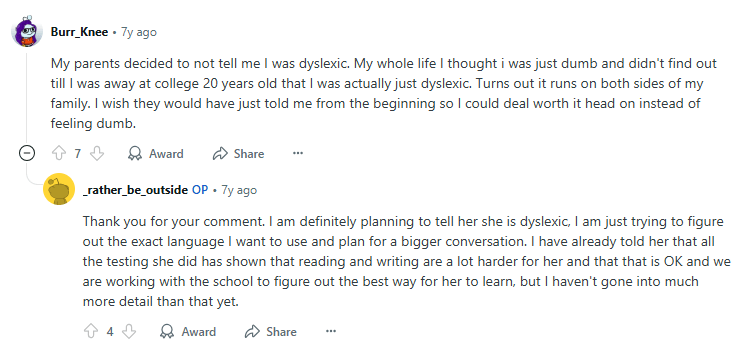
Even with the most cautious disposition, breakdowns can still occur. In this case, pause the studying immediately and help the child re-center and self-regulate before continuing. Additionally, try to reflect on what went wrong and avoid the mistake in the future.
Dyslexia reading help by giving a break when needed
We all get tired, but when dealing with the reading curriculum for dyslexia, that gets multiplied. Stay tuned with your kid’s needs, never overburden them with activities, and try to prioritize shorter yet more frequent lessons.
How to know when to take a learning break?
- The physical signs of fatigue speak for themselves. Always take note of yawning, sighing, distribution, slouching, fidgeting, or rubbing eyes. More frequent mistakes than usual are also a signal to relax.
- Once a child starts complaining and rejecting, that’s also a clear sign. You’ll notice that they lost motivation, revealing little to no interest in the material.
- Finally, you should constantly monitor the timing. Dyslexia and reading can work together, but only when you strike a balance between learning and rest.
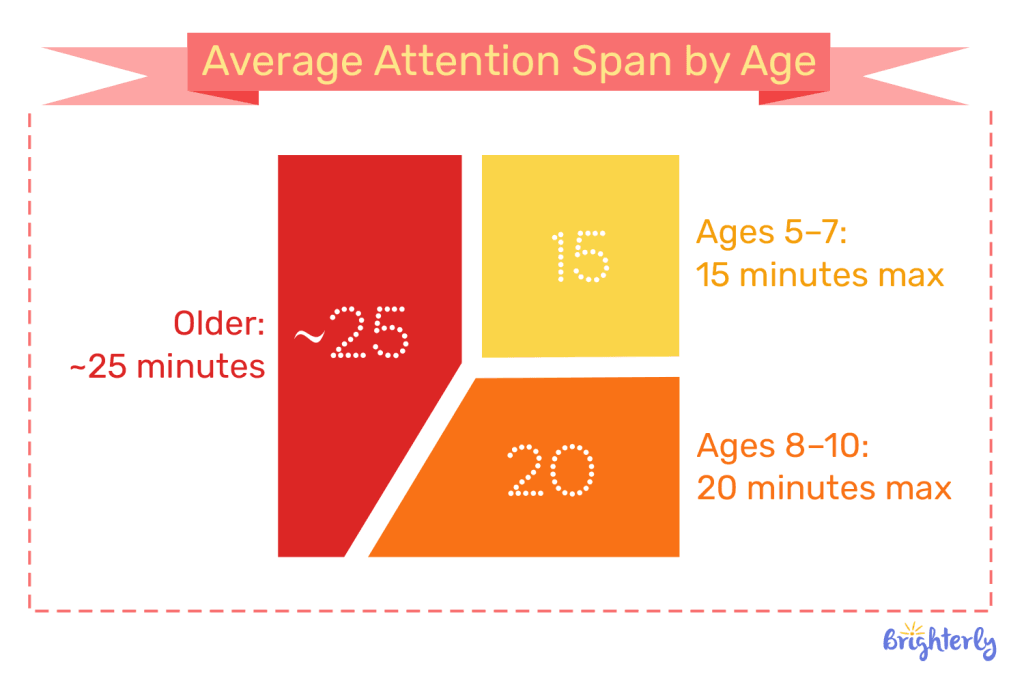
I’d recommend using a visual timer for tracking. With such a tool, both you and your kid will be better in charge of their time.
So, these are the most effective strategies for dyslexic readers, as proven by my experience and also the reviews I could find online. But, of course, there are many more to try. If you are looking for extra ideas, check out the article Reading Strategies for Struggling Readers — I bet you’ll find the one for yourself.
Tips for reading with dyslexia
- Practice with worksheets
- Try to visualize
- Read more and often
- Avoid distractions
- Break tasks into smaller pieces
Helping dyslexic readers with worksheets
Worksheets can provide an almost ideal dyslexia reading help for a couple of reasons.
- First, they are handy — you can use them in print or on your device.
- Second, they are diverse, meaning the number of tasks they offer is vast.
- And third, they are free — at least, if we’re talking about the sheets developed by Brighterly. That’s the reading and math tutoring platform with 1:1 lessons we discussed previously, remember?
You’ll be pleased to learn that you can use Brighterly free reading worksheets even if you’re not their learner. Just select your grade and topics, and download the preferred resource — simple and free.
Helping dyslexic readers using visualization
Visualization enhances comprehension; that’s why it’s so potent for providing reading help for dyslexia. Encourage the kid to visualize everything — from people to clothes, settings, trees, weather, and so on. After all, if you perceive a reading piece like a movie, the whole text becomes more pleasing.
Note: According to the research, about 65% of the population are visual learners. If your child also belongs to the number, they will greatly benefit from visualizing text as pictures, at least in their heads.
Reading with dyslexia children more regularly
What if I say that you don’t need a book to practice reading? Let’s rethink the whole process. You can read ads on the street, billboards, or cafe titles — everything will work. The task is to make dyslexia and reading comprehension inseparable, and then you can combat the condition.
Alternatively, you can experiment with other options for non-traditional reading practice.

Note: The research has shown that learners who read more, regardless of the format, are more successful in this skill. For preschoolers, the success rate is approximately 12% higher. But the number increases to 30% in high school.
Teach dyslexic child to read without distractions
Reading strategies for students with dyslexia won’t work if they get distracted by things like lamp light, loud outside noises, or, most dangerously, phones. So, try to create a distraction-free zone, where you focus entirely on the material.
Note: According to the research by The Times magazine, kids can concentrate for only 14 minutes before they get distracted by their phones. So, better turn off the sound beforehand.
Helping dyslexic readers by breaking tasks into smaller pieces
Speaking in general, reading for dyslexia students is a complicated process due to their short attention span. To address the issue, try to create clear studying plans where you break the exact topic into manageable chunks. Although this approach consumes more time, the result is entirely worth it.
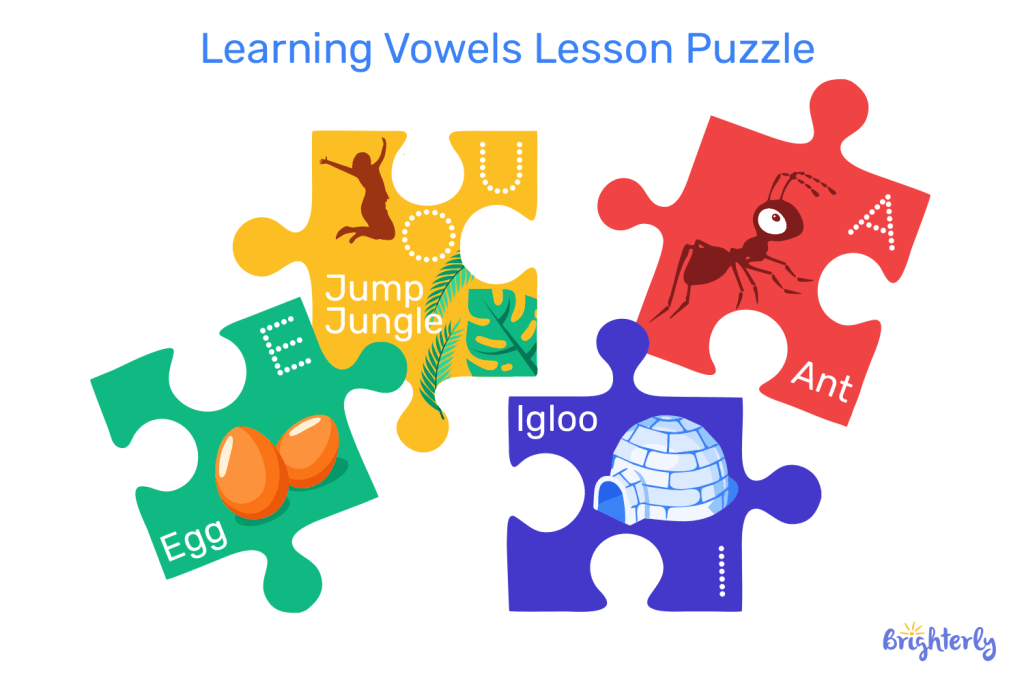
Note: This research has defined that learners can keep up to 5 information chunks in their brains. That’s for regular learners, but the number decreases for dyslexia. Remember this information when planning your lessons.
The best reading strategies for dyslexia: Conclusion
Now you know that any dyslexic learner needs a special approach and attention. After all, the strategy you adopt and the support you provide are half the battle, so choose carefully, watch how your child reacts, and let your reading results be beneficial!
For those of you who want to address reading challenges as a whole, I cannot think of a better option than participating in customized, one-on-one lessons. Remember those inclusive Brighterly tutoring opportunities? Good news! You can book 1st free reading class and see if it’s a good fit for you. Why not try Brighterly with zero risk?




